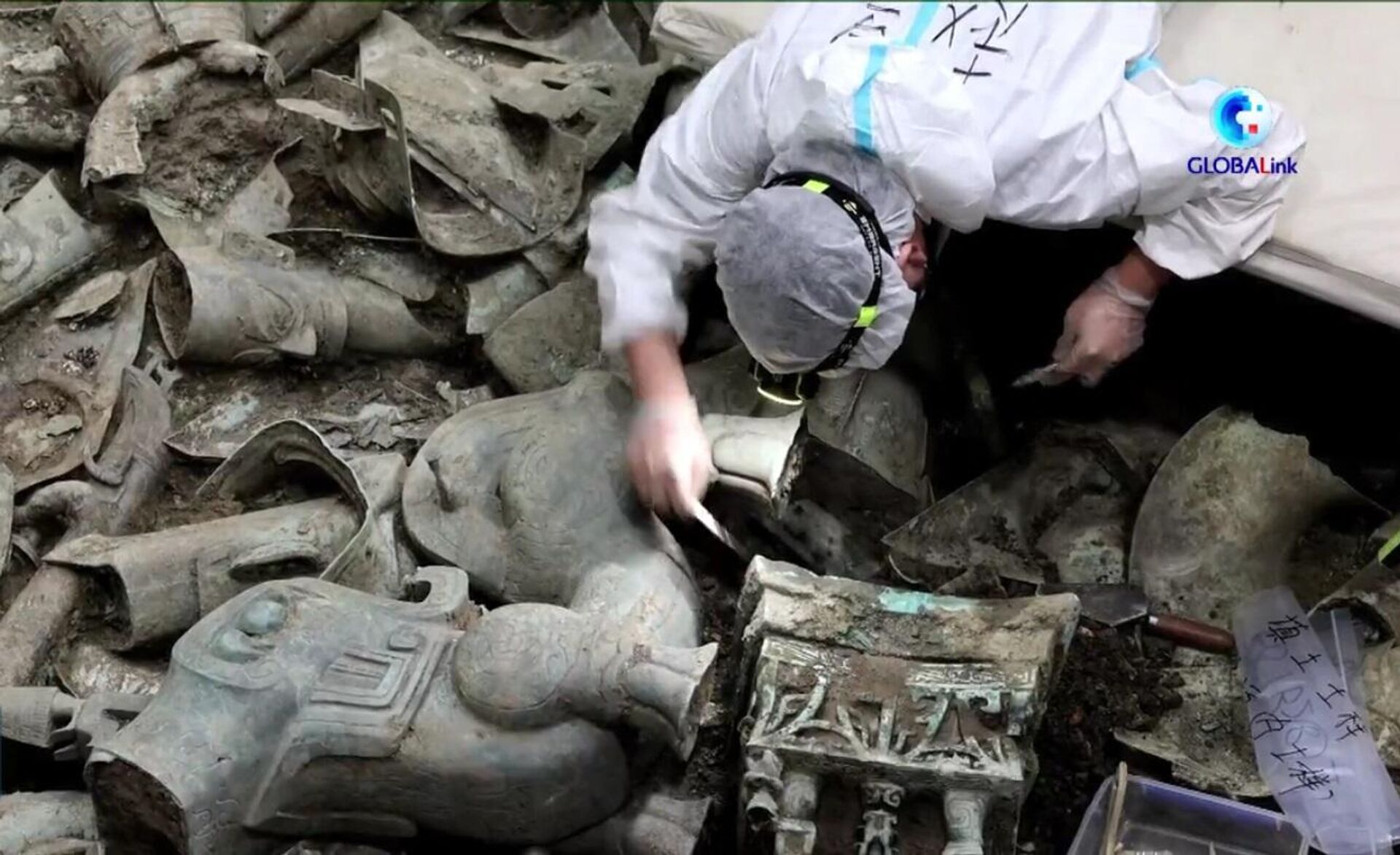Tracing Chinese Civilisation via Sci-Tech
12:01 GMT 17.06.2022 (Updated: 20:16 GMT 19.10.2022)

CC0 / /
Subscribe
On the second Saturday of June since 2006, China has celebrated Cultural and Natural Heritage Day. With 56 UNESCO World Heritage Sites, China ranked second in the world.
More than 8,800 archaeological excavation projects have been carried out for the past decade. The project to trace the origins of Chinese civilisation, initiated in 2002, has proven that China's history includes million years of human evolution, 10,000 years of culture, and more than 5,000 years of civilisation.
President Xi Jinping said on May 27 that archaeological exploration and literature research should be combined with tools and methods of natural sciences to further the project.
The application of science and technology has indeed been of crucial support to the achievements of archaeological work in China to date.
Sci-Tech Facilitates Archaeological Work
"The research objects of archaeology are usually remains of artifacts, and modern sci-tech approaches are essential to discover the remains, dig out and interpret the information and values embedded in the remains," said Chen Jianli, professor at School of Archaeology and Museology, Peking University.
Listed as a UNESCO World Heritage Site on July 6, 2019, the archaeological ruins of Liangzhu (about 3,300-2,300 BC) prove that China has more than 5,000 years of civilisation.
Liangzhu is located in the Yangtze River Basin on the south-eastern coast of China, and it took archaeologists years to gradually uncover its secrets. In 2007, Geographic Information System software was used to create a digital elevation model of the site, which helped the archaeologists to identify the site's outer city. Later, researchers found a dam at the site with the help of a remote sensing image acquired by a U.S. satellite in 1969.

A newly unearthed bronze sculpture at the famed Sanxingdui Ruins site was successfully matched with another bronzeware part after being set apart about 3,000 years ago, the archaeological team confirmed Thursday
© Photo : China Xinhua News/twitter
Other hi-tech approaches and facilities used in general archaeological work include carbon-14 dating, synchrotron light source and drones with LIDAR mapping system.
The importance of sci-tech approaches in archaeological work was further emphasised in a plan for archaeological work in the 14th Five-Year Plan period (2021-2025), released by the National Cultural Heritage Administration this April.
According to the plan, the key tasks in archaeological work are to reinforce the R&D of new technologies and the improvement and upgrade of equipment, while also organizing specific R&D projects in key technologies, like archaeology via aerial remote sensing, and prepare for reference materials for inorganic cultural relic analysis, in order to effectively expand the range and depth of archaeological work with the latest sci-tech approaches.
Protecting Relics via New Technologies
New technologies are playing important roles in protection of cultural relics.
Instant protection for historical remains is crucial when they are first dug out of the earth, as they are delicate due to the long-time burial. The weather, including temperature and humidity, may also cause damage.
During the work at Sanxingdui Ruins site in southwest China's Sichuan province, archaeologists used 3D printing to protect the newly discovered bronzeware. They first printed a model of the bronzeware, then covered the model with congealed silica gel. A protection case was formed when the gel dried. The actual bronzeware was then placed in this protective case.
"To my knowledge, it is the first time that 3D printing is used to protect newly unearthed bronzeware, which could effectively avoid possible damage to the bronzeware. This innovative approach deserves approval," said Wang Wei, director with Academic Division of History under the Chinese Academy of Social Sciences.

Visitors tour the Forbidden City decorated with red lanterns and illuminated with lights during the Lantern Festival in Beijing, Tuesday, Feb. 19, 2019.
© AP Photo / Andy Wong
Preventive measures are also taken to protect relics. Internet of Things (IoT) is used by Dunhuang Academy to conduct preventive protection for caves. IoT monitoring equipment has been installed both inside and outside the renowned Mogao Grottoes in Dunhuang, northwest China's Gansu province, which can monitor in real time the temperature, relative humidity and carbon dioxide in the cave and the weather outside the cave.
When the number of visitors and the carbon dioxide index peak, warning lights will be turned on, alerting staff to take measures to bring the indexes back to normal.
Presentation and Transmission of the Legacies
Not everyone has the opportunity to personally experience legendary cultural heritage sites. However, now sci-tech enables the borderless transmission of the legacy of such sites.
A project called Digital Dunhuang was initiated to realise the permanent storage of relics at the Dunhuang caves with the help of information technology, more than 30 years ago.
In May 2022, researchers completed the digital acquisition of murals in 260 caves and more than 500 movable relics, the 3D reconstruction of seven large sites and over 40 painted sculptures, and the production of panorama programmes of more than 140 caves of the Mogao Grottoes.

A newly unearthed bronze sculpture at the famed Sanxingdui Ruins site was successfully matched with another bronzeware part after being set apart about 3,000 years ago, the archaeological team confirmed Thursday
© Photo : China Xinhua News/twitter
The Digital Dunhuang website now provides high definition images of 30 entire caves in Dunhuang, with descriptions both in Chinese and English, and has had more than 15 million views from 55 countries.
Science and technology have played an important role in the entire process of discovering, protecting and spreading knowledge of cultural relics. Further strengthening of sci-tech innovation in archaeological work will increase contributions to the tracing and transmitting of Chinese and global civilisations as a whole.
This article was originally published by Science and Technology Daily



